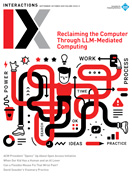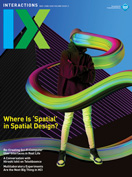Authors:
Jonathan Bean
One Sunday night, home alone and worn out from a weekend of mundane household tasks, I decided to pick up dinner. I started to regret that decision precisely 20 minutes later, when I found myself stuck in a drive-through line that showed no signs of moving. Hemmed in by a curb on both sides, I had no choice but to wait and ponder my life choices and the direction of the world.
Thirty seconds later, I decided it would be much more productive—or at least less anxiety-inducing—to consider why and how I was stuck in this drive-through line again. The establishment I was visiting cannot really be called a restaurant because it has no dining room; imagine a fast-food restaurant without any tables and chairs. Unlike tiny restaurants I've been to in New York, San Francisco, and Tokyo, it doesn't even have a standing-room-only bar. Outside, despite Tucson's dry and warm climate, there's no place to sit and eat. The building is only big enough for a kitchen and cold storage. The entire thing is encircled by the drive-through lane and a few parking spots for employees and people picking up orders. The only option is to get your food and go somewhere else.
In Tucson, where I live, there are three different brands operating with this same playbook: one specializes in salads, the second in protein and rice bowls, and the third, improbably, in lobster. From a financial perspective, it is genius. The drive-through-only design gets rid of spaces that don't directly generate revenue. If you venture inside, you order at a touchscreen kiosk. The salad restaurant doesn't even have any interior space accessible to customers, and the service window has no cover offering effective protection from rain or sun, as though it has been designed precisely to penalize people who dare venture out of their cars. An industry journal article touts the success of one chain operating with this model, which is opening a new store every week [1]. At the location where I found myself stuck in the drive-through line, you place your order with a disembodied human voice coming from a speaker box, with a credit card reader mounted on top.
As I was waiting my turn, I noticed a sign advertising for workers, promising a starting wage of almost $20 an hour, with a pathway to a $100,000 salary within a year.
I was not expecting such a mundane experience at the drive-through to offer a startlingly clear window into the future. But the degree to which the building itself had been optimized—shrunk to the components needed to store, prepare, and deliver food—made it easy to see a future where the kind of work the humans were doing inside would be relegated to robots. Through the drive-through window, I saw signs placed inside, reminding the soon-to-be redundant humans to multitask: "Make drinks while taking orders to increase efficiency." It doesn't take much to imagine the combination of an AI order taker and a cartoonish robotic arm, in the style of a visual gag from a 1980s Inspector Gadget animation, delivering orders and drinks with perfect efficiency.
As I waited for the rubber-gloved humans to finish preparing my order, I could see that they were working at a frenetic pace to serve the line, which, if backed up farther, would spill out into a busy road. The prep station they were working at, with stainless steel and plastic bins filled with lettuce, tomatoes, cucumbers, rice, onions, and other ingredients, was reasonably tidy by restaurant standards, which means it was strewn with stray bits and pieces of food, but not so many as to suggest the lack of regular wipe-downs. I watched as ingredients were removed from one bowl, where they were presumably placed by mistake, and plopped on top of another bowl, which I was handed about 15 seconds later.
In a world where so many people have food allergies and sensitivities, I wondered whether a robot would be able to maintain a tidier station with less danger of cross-contamination. Then Susan Leigh Star's well-known reflection on the consequences of being allergic to onions [2] crossed my mind and not only because I can't eat raw onions. Star wrote about an experience at McDonald's, another system designed for throughput. Customization beyond what was built into the system up front would border on catastrophic; Starr reported waiting 45 minutes for a hamburger without onions. Perhaps that is why I was stuck in the drive-through line for what felt like an eternity (but, to be fair, was only 15 minutes.) Was someone else allergic to onions? There is an alarming number of us.
I am tempted to write that we are on a collision course with AI and automation, but that is not the right metaphor. In some ways, I would prefer the violence of an inevitable confrontation, because, to torture the metaphor, it suggests a battle that could be fought and, perhaps, won. In that case, we might stand a chance against the onions. Instead, it feels like what is happening might be better compared to getting stuck in a perpetual drive-through, or being buckled into a Wallace and Gromit Claymation conveyor belt moments before things go horribly wrong.
Selfishly, I am concerned about whether people like me will be able to order food in the future if the person (or AI) responsible for designing the ordering interface fails to understand the intricacies of food handling and dietary needs. From a broader perspective, I'm concerned about how our world will look and function if efficiency is the ultimate criterion. Drive-throughs have long been the poster child for critics of automobile-centered cities and suburbs. They allow people to stay in the safe bubble of their cars and make the immediate environment less inviting and more treacherous for pedestrians. They also contribute to asthma and lung disease because they increase the amount of time cars are idling, thereby driving up urban pollution. Beyond convenience, it's difficult to think of positive societal contributions of drive-throughs—though they certainly can make a lot of money, and quickly.
I see two points of relevance to HCI. First is the observation that decreasing friction in a system for most people can lead to increased and even intolerable friction for others. This is the problem with onions. The second is about systems effects and lock-in. The soon-to-be humanless drive-through is evidence of a self-reinforcing system. Restaurants without dining rooms are more profitable, and food service establishments with no or very few human employees are even more profitable. The drive-through I found myself stuck in gives investors eyeing future returns a new point of comparison. That's why it made economic sense to replace the old restaurant, a family-owned cheesesteak shop that didn't make it through the pandemic, located in a building with plenty of room for seating, with this new model of efficient food provision. In policy terms, this may be the "highest and best use" of the property but only in the short term. This kind of use also comes with more pavement, more car traffic, and the diminishment of the pedestrian environment. The cheesesteak place had plenty of tables—it was the kind of place where families and friends spent time sharing a meal and where you were likely to bump into a neighbor. It offered the opportunity for informal social interactions between strangers—the kind of not home, not work "third place" popularized by sociologist Ray Oldenburg [3]. This drive-through is not far from my house, but if my next-door neighbor or best friend had been three cars back, I would not even have known.
Some say this is what the market wants: America, in general, has a strong car culture, and Tucson, in particular, is already a sprawling, auto-centric city. What's another drive-through? But the city also has declared a climate emergency and set a goal for zero carbon emissions. In other places, it may be tempting to turn a blind eye to increasing weather extremes. In Tucson, though, the temperature reached 100 degrees Fahrenheit (37.7 degrees Celsius) in early April this year, which is the earliest in recorded history it has been that hot. Nearly everyone will agree that it would be nice to reduce the extent of additional heat, even a little. Of course it's nice to stay in an air-conditioned car, rather than trudging across a hot parking lot. This perfectly understandable human desire for comfort and convenience [4], however, when aligned with flawed economic logics that ignore the external costs of pollution and degradation of walkability, accelerates the flawed conveyor belt of modernity. It is time for HCI to recognize the role it can play in designing humans into systems. If not, we may all find ourselves stuck in a drive-through.
1. Kelso, A. Salad and Go is opening a store a week with plans to expand 'into the thousands.' Nation's Restaurant News. Jan. 11, 2024; https://bit.ly/3YYmgyK
2. Star, S.L. Power, technology and the phenomenology of conventions: On being allergic to onions. In A Sociology of Monsters: Essays on Power, Technology and Domination. J. Law, ed. Routledge, 1991.
3. Oldenburg, R., ed. Celebrating the Third Place: Inspiring Stories About the "Great Good Places" at the Heart of Our Communities. Marlowe & Company, 2001.
4. Shove, E. Comfort, Cleanliness and Convenience: The Social Organization of Normality. Berg Publishers, 2003.
Jonathan Bean is director of the Institute for Energy Solutions and an associate professor at the University of Arizona. He studies taste, technology, and market transformation. [email protected]
Copyright 2025 held by owner/author
The Digital Library is published by the Association for Computing Machinery. Copyright © 2025 ACM, Inc.








Post Comment
No Comments Found